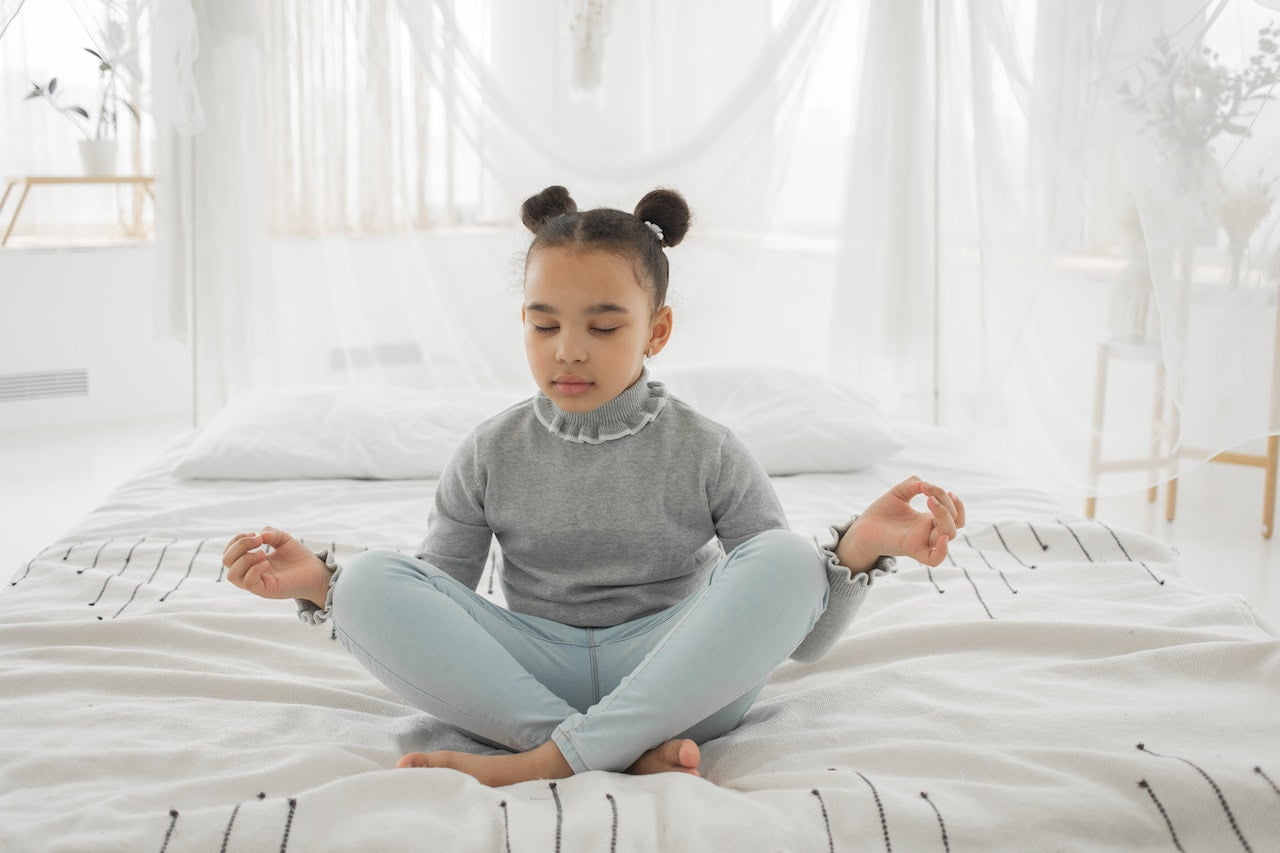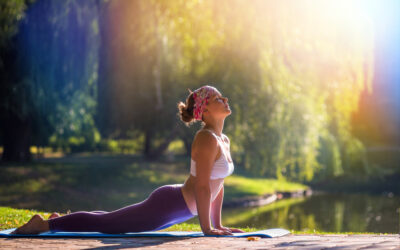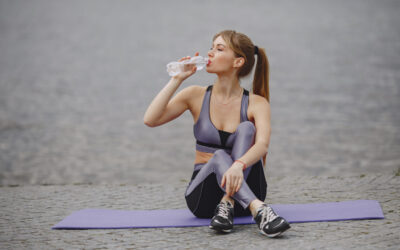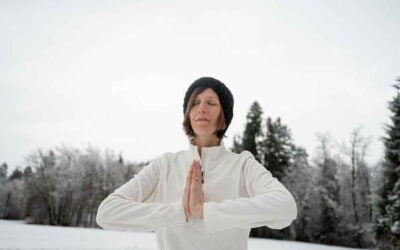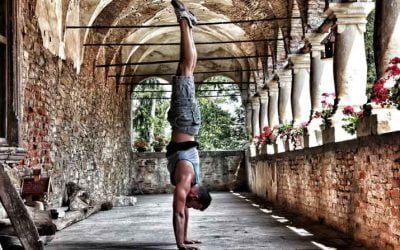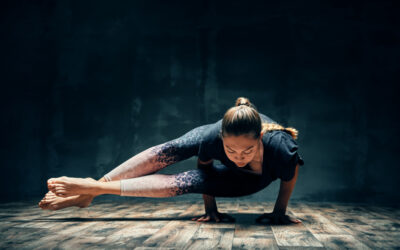Yoga for Tweens and Early Teens is an important practice for promoting physical and mental health. With the physical, cognitive and emotional changes that occur during the tween and early teen years, practicing yoga can be incredibly beneficial. In this article, we’ll look at the top 5 yoga poses every tween and early teen should learn in order to get the most out of their yoga practice. From simple warm-ups to more challenging poses, these five poses will help tweens and early teens to develop strength, balance and flexibility.
Benefits of Yoga Poses for Tweens and Early Teenagers.
Yoga is a powerful tool that can help tweens and early teenagers improve their physical and mental health. Here are some of the benefits of practicing yoga poses for tweens and early teenagers;
1. Improved Flexibility.
Yoga poses help to improve flexibility and range of motion. This can be especially beneficial for growing tweens and early teenagers who may experience tight muscles and joints.(1)
2. Improve Balance and Coordination.
Many yoga poses require balance and coordination, which may help tweens and early teenagers improve their overall physical coordination and balance.
3. Reduced Stress and Anxiety.
Yoga has been help to reduce stress and anxiety, which can be particularly helpful for tweens and early teenagers who may be dealing with academic or social pressures.(2)
4. Improved Focus and Concentration.
Yoga requires focus and concentration, which can help tweens and early teenagers improve their ability to focus and concentrate in other areas of their lives, such as schoolwork.
5. Increased Self-awareness and Self-confidence.
Through yoga, tweens and early teenagers can learn to connect with their bodies and become more aware of their thoughts and emotions. This may help them develop a stronger sense of self-awareness and self-confidence.
6. Better Sleep.
Yoga has been shown to improve sleep quality, which can be especially helpful for tweens and early teenagers who may struggle with sleep issues.
Overall, practicing yoga poses can help tweens and early teenagers improve their physical health, mental health and overall well-being.
Top 9 Yoga Poses For Tweens and Teenagers.
1. Cobra Pose.
Cobra Pose is an important part of yoga for tweens and early teens. It is a foundational pose that helps build strength and flexibility, as well as improve breathing and posture.
In the pose, the body is in the shape of a cobra snake with the arms extended straight back, the elbows bent and the chest lifted.
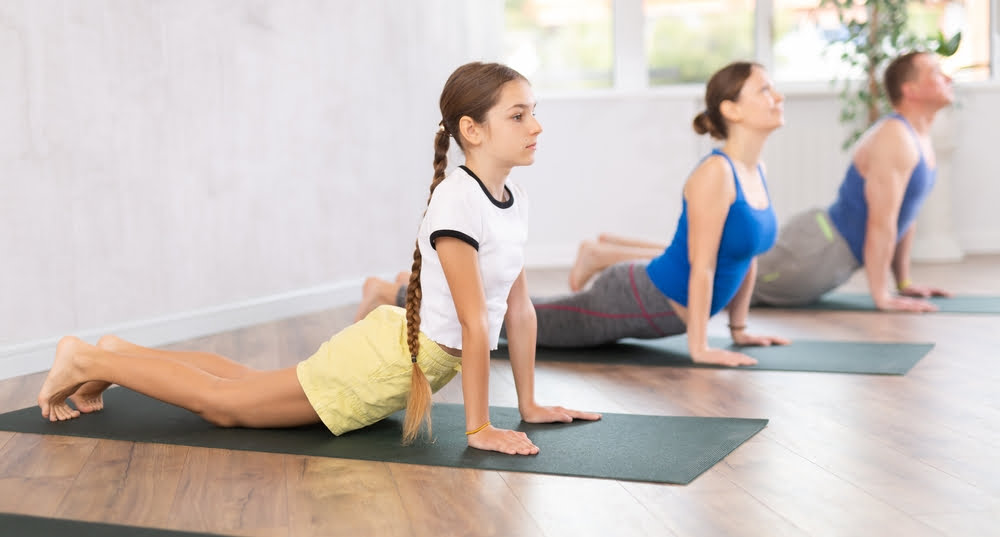
How to do Cobra Pose?
- To begin the pose, lie on your stomach with your legs together and your toes pointed.
- Place your hands near your shoulders and press into them as you lift your chest off the floor.
- Make sure to keep your elbows bent and close to your sides.
- As you lift, draw your shoulder blades together and down your back.
- Keep your neck relaxed and your gaze forward or slightly upward.
- Hold the pose for five breaths and then release back down.
By doing this pose regularly, tweens and early teens can gain strength, open their chests and improve their posture. As they become more experienced, they can add variations to the pose like arching their back further, extending one arm up, or pressing their feet into the ground for more support. Cobra Pose is a great way for young yogis to build a strong foundation in their practice.
2. Downward Facing Dog Pose.
Downward Facing Dog is an essential pose for yoga for tweens and early teens. This pose helps to stretch the entire body, relieving tension in the shoulders, hamstrings and calves. It also helps to improve posture and increase spinal flexibility.
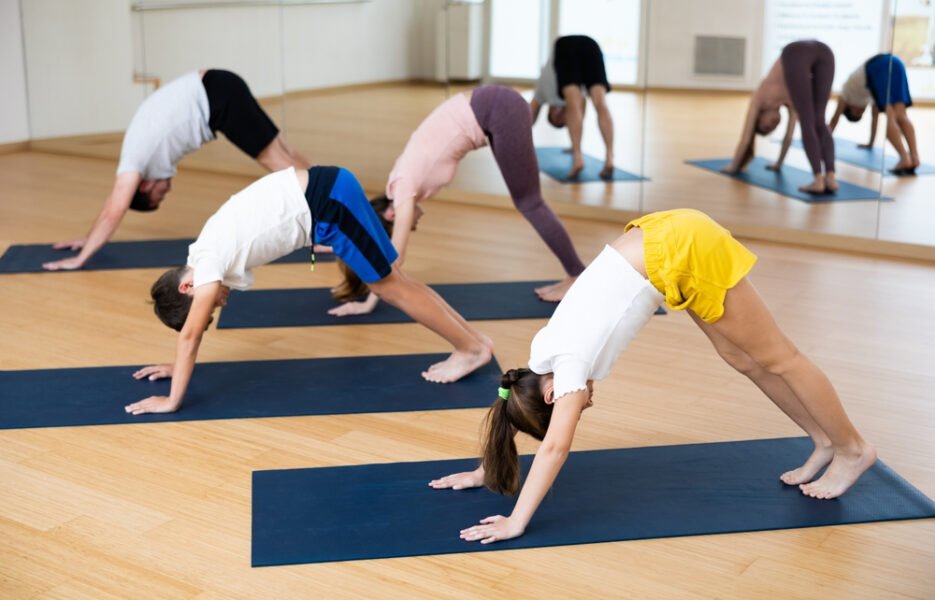
How to do Downward Facing Dog Pose?
- To do this pose, start on your hands and knees with your wrists directly under your shoulders and your knees directly under your hips.
- As you exhale, lift your hips up and back, and straighten your arms and legs to form an inverted V shape.
- Your feet should be hip-width apart, with your toes pointing towards the ground.
- Make sure to keep your neck relaxed as you gaze towards your navel.
- Hold the pose for about five breaths, then release as you exhale.
3. Warrior I Pose.
Warrior I pose, also known as Virabhadrasana I, is a powerful pose that helps to build strength and stamina in your body. It also helps to improve balance and coordination, while increasing flexibility.
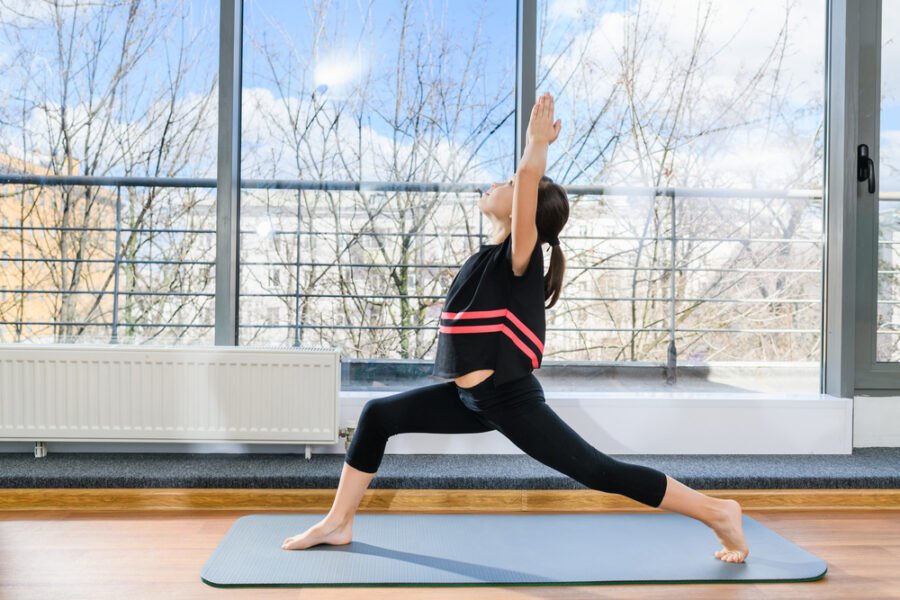
How to do Warrior I Pose?
- This pose begins by standing with your feet together and your arms down by your sides.
- Begin to step your right foot back, so that your feet are approximately 3-4 feet apart.
- Make sure that your toes on both feet are pointing directly forward.
- Take a deep breath and raise your arms out to the side until they are parallel to the floor.
- Reach up with your hands, palms facing each other.
- Bend your right knee and turn it outward so that your knee is over your ankle.
- Keep your hips square, chest open and abdominals engaged and look straight ahead as you hold the pose for at least 5-10 breaths.
- To release, inhale as you straighten your front leg and bring your hands back down to the sides.
When practicing Warrior I pose, it is important to keep your chest lifted and open and your core muscles engaged. This pose is a great way to strengthen your core and legs, as well as to stretch your shoulders and upper back. If you have any knee or lower back pain, it is best to avoid this pose or practice it with caution.
4. Warrior II Pose.
Warrior II Pose is one of the most beneficial poses for tweens and early teens to learn and practice. This pose requires concentration and strength in order to maintain proper alignment.
It helps to open up the chest and hips, as well as stretching the thighs, ankles and calves. This pose also strengthens the muscles in the back and legs and helps to improve balance.
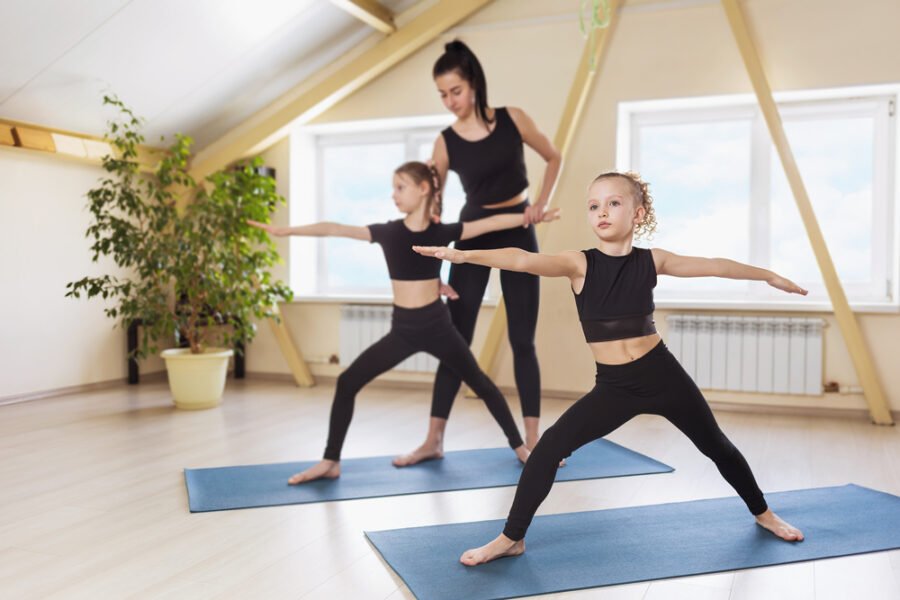
- To practice Warrior II Pose, begin standing in Mountain Pose at the top of your mat.
- Step your feet wide apart, with your right toes pointing out to the right side and your left toes pointing out to the left side.
- Bend your right knee until your thigh is parallel to the floor and your shin is perpendicular to the floor.
- Make sure that your knee stays directly over your ankle.
- Reach your arms out parallel to the floor with your palms facing down.
- Take a deep breath in, and exhale as you lower your hips towards the floor.
- Keep your shoulders square and draw your shoulder blades down your back.
- Keep your neck in line with your spine by looking forward.
- Hold the pose for five to eight breaths.
- To come out of the pose, inhale as you straighten your right leg and press firmly into both feet as you come back to standing position.
- Repeat on the other side.
Warrior II Pose provides a great opportunity for tweens and early teens to challenge their bodies and build strength and confidence.
The posture also encourages an increased awareness of the body, which is important for physical and mental wellbeing.
Regular practice of Warrior II Pose can help tweens and early teens to maintain a healthy posture, find balance, stability and cultivate an overall sense of peace and calmness.
5. Triangle Pose.
Triangle Pose, also known as Utthita Trikonasana, is an excellent yoga pose for tweens and early teens. It is a standing pose that strengthens the legs, opens the chest and hips and increases flexibility in the spine. This pose helps to build balance and coordination and encourages mindful awareness of the body.
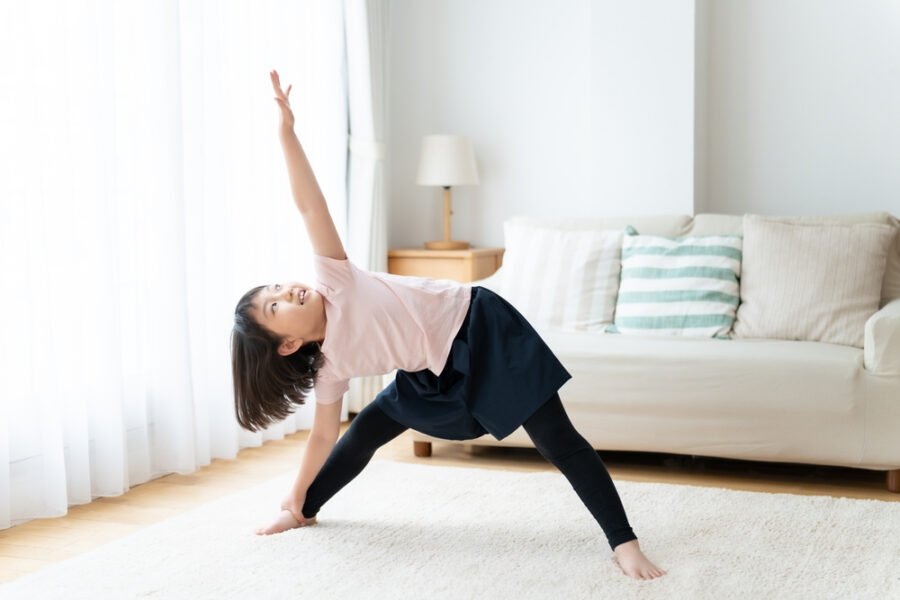
How to do Triangle Pose?
- To come into Triangle Pose, start in a standing position with your feet about four feet apart.
- Turn your right foot so it is pointing outward at a 90-degree angle.
- Keeping your right foot firmly planted, turn your left foot inward so that the heel of your left foot is in line with the arch of your right foot.
- Reach both arms out to the side and press them firmly into the ground.
- Then, on an inhale, reach your right arm up towards the sky and bring your left hand down towards the ground near your left leg. Your body should form a triangle shape.
- Keep your gaze fixed on a point in front of you and focus on pressing down through your feet.
- Hold the pose for five to eight breaths before releasing your hands and coming back to a standing position.
- Switch sides and repeat the pose on the other side.
When coming into Triangle Pose, it’s important to keep your core engaged and maintain a neutral spine. If your lower back is tight, you may find it difficult to bring your hand to the ground.
If this is the case, place your hand on your thigh instead. Additionally, if you feel any strain in your neck or shoulders, bring your gaze up slightly so that you are looking forward rather than all the way up to the sky.
By practicing Triangle Pose regularly, tweens and early teens can cultivate strength and flexibility, while also learning to stay present and connected to their bodies.
6. Camel Pose.
Camel Pose, or Ustrasana in Sanskrit, is a pose that can help to open the chest, as well as improve posture. It is especially beneficial for tweens and early teens who are trying to cope with changing bodies and growing pains.
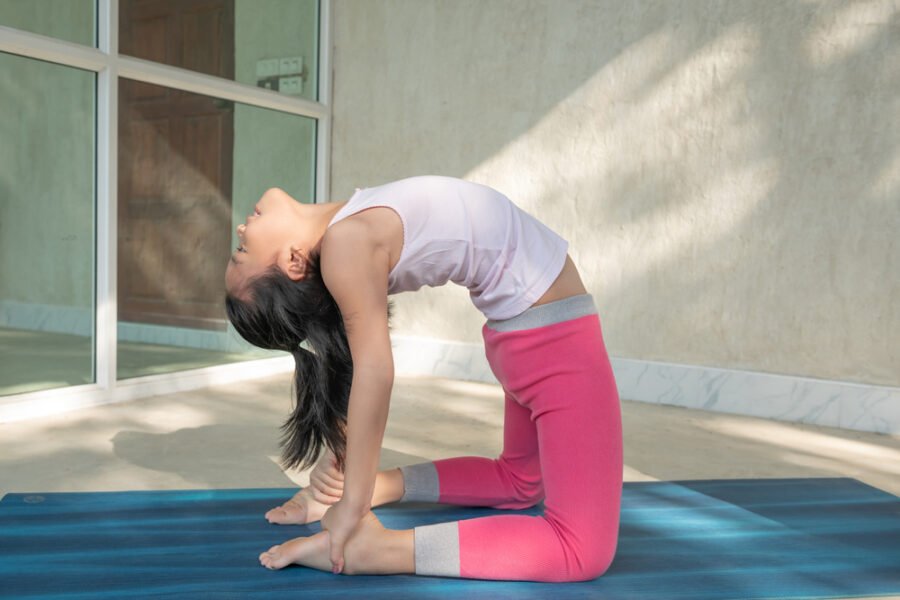
- To come into Camel Pose, start in a kneeling position with your knees about hip-distance apart.
- Your thighs should be perpendicular to the floor, with your toes pointing back.
- Place your hands on your hips and press them firmly into your body.
- Slowly arch your back as you reach your hands behind you to grab your ankles.
- Make sure that your arms remain straight as you draw your torso back. Keep your head raised and look upward.
- Hold this pose for up to 30 seconds, breathing deeply and allowing your body to relax into the posture.
- Then, slowly release the pose by bringing your hands back to your hips, keeping your back slightly arched as you return to a kneeling position.
Camel Pose is an excellent pose for tweens and early teens, as it helps to reduce tension in the chest and shoulders while also building strength in the back muscles. Practicing this pose regularly can help to improve posture, reduce stress and anxiety and increase flexibility.
7. Butterfly Pose.
Butterfly Pose, or Baddha Konasana in Sanskrit, is a great yoga pose for tweens and early teens to improve flexibility in the hips and inner thighs.
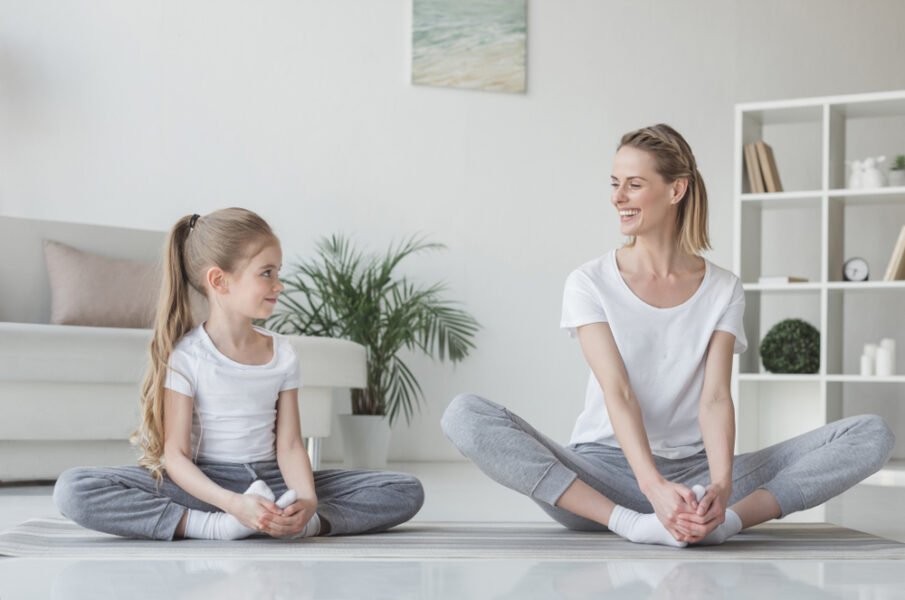
- To get into this pose, have your tween or early teen start seated on their mat with the soles of their feet together, allowing the knees to fall out to the sides.
- If they’re comfortable, they can press their fingertips into the ground to gently walk them closer to the feet.
- The hands can be placed at the heart center in prayer position or on the soles of the feet for extra balance.
- This pose can be held for up to five minutes, which will help increase flexibility over time.
- To further deepen the pose, encourage your child to gently fold forward from their hips and relax their head and shoulders.
- It’s important to remind them that it’s okay if the hips are not able to fold down to the ground; it just means their body isn’t ready for that yet.
- When they’re finished, have your child take a few deep breaths before coming back up slowly.
Butterfly Pose is an excellent pose for both tweens and early teens alike and should be practiced several times a week for maximum benefit.
8. Hand to Big Toe Pose.
Hand to Big Toe Pose (Utthita Hasta Padangusthasana) is a standing pose that helps teens to open their chest and shoulders, build strength in the lower body and improve balance.

- To begin this pose, start in Mountain Pose.
- As you inhale, lift the arms up in front of you and reach the fingertips toward the sky.
- On your next inhale, bend the right knee and bring your right heel up to your buttocks.
- Reach your right hand down and grab hold of your right big toe, with your index and middle fingers.
- Bring the raised foot in line with your left hip and hold it there.
- If you can, press your right leg straight while keeping your core engaged and chest lifted.
- Stay in the pose for several breaths, focusing on the expansion of the chest and shoulder blades on each inhale and pressing the right foot away from you on each exhale.
- To come out of the pose, slowly release your grip on the toes and place the right foot back down on the floor.
- Repeat on the left side.
This pose is a great way for tweens and early teens to build strength in their legs, open their chest, shoulders and improve balance. It can also improve concentration and focus, which is important for young people who are often feeling overwhelmed with school work.
9. Reverse Warrior.
Reverse Warrior is a great yoga pose to help teens and tweens improve their strength, balance and flexibility. It is a variation of the classic Warrior I Pose and provides the same benefits as the traditional pose, but with the added challenge of stretching the other side of the body.
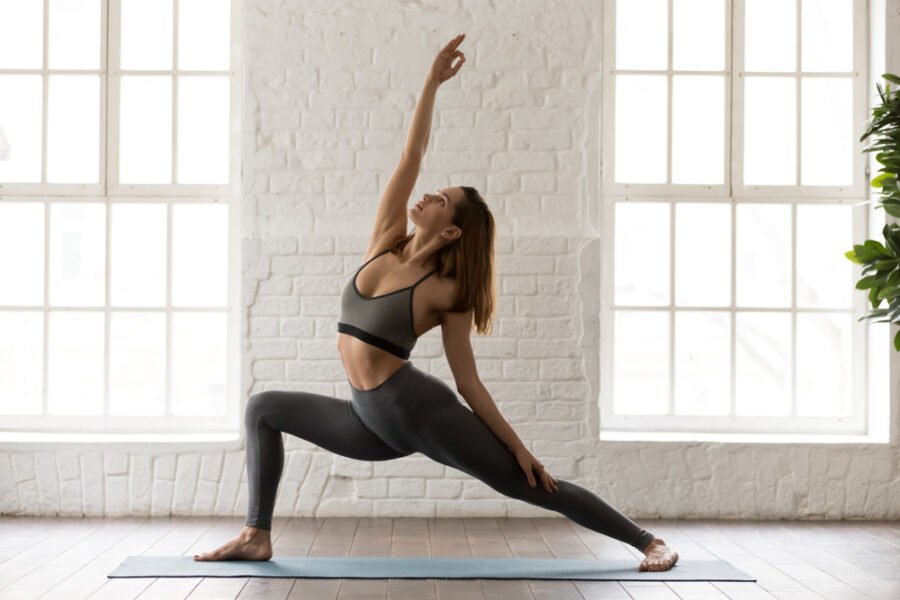
- At first, start in a standing position with your feet hip-width apart.
- Reach your right arm up and over your head, reaching for the sky.
- Then, reach your left arm out to the side and rotate your torso so that you are facing the side.
- You should be in a slight lunge position, with your back leg straight and your front leg bent at the knee.
- Try to keep your arms and shoulders in line with each other.
- Hold this pose for several deep breaths, focusing on stretching the sides of your body and lengthening your spine.
Reverse Warrior is an excellent pose for building core strength, toning muscles and improving balance.
best time to do Yoga for Tweens and Early Teen.
When it comes to doing yoga, the best time to practice is always going to be in the morning. That’s when your body and mind are both more rested, so you’ll be able to focus more clearly and concentrate on your poses better. Plus, a morning yoga session can help set the tone for your entire day.
If you’re a teen or tween, you may find that you don’t have enough time to do a full yoga session in the morning.
In that case, try setting aside some time at night before bed to do a few of the poses. You’ll still get the same calming benefits of yoga, but without having to get up any earlier.
Alternatively, try doing yoga during the day when you have a few minutes of downtime between classes or extracurricular activities.
Bottom Line.
Yoga is a great way for tweens and early teens to stay active and healthy, as well as learn important life skills such as focus, balance, and breathing techniques. The poses outlined in this article are just a few of the many that tweens and early teens can practice to help them stay physically and mentally fit. Regardless of which poses you choose to practice, be sure to listen to your body and do not push yourself too hard. With dedication and practice, you can reap the wonderful benefits that yoga has to offer.
+2 Sources
Freaktofit has strict sourcing guidelines and relies on peer-reviewed studies, educational research institutes, and medical organizations. We avoid using tertiary references. You can learn more about how we ensure our content is accurate and up-to-date by reading our editorial policy.
- The Effect of Yoga Postures on Balance, Flexibility, and Strength in Healthy High School Females; https://www.researchgate.net/publication/232207909_The_Effect_of_Yoga_Postures_on_Balance_Flexibility_and_Strength_in_Healthy_High_School_Females
- Yoga in public school improves adolescent mood and affect; https://www.ncbi.nlm.nih.gov/pmc/articles/PMC4605219/

 Workout
Workout
 Meditation
Meditation


 Stories
Stories


 Podcast
Podcast E-book
E-book